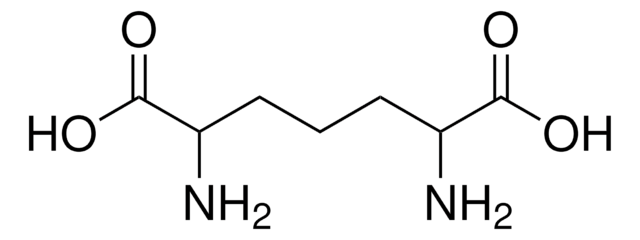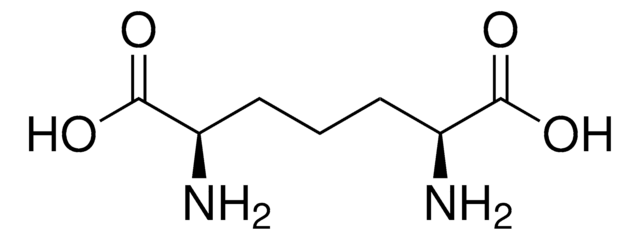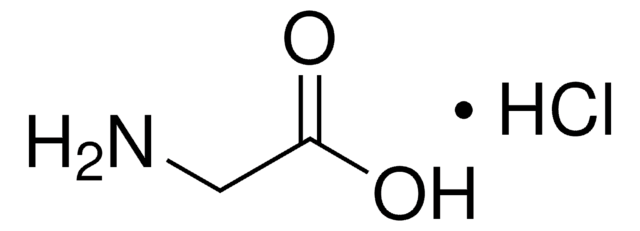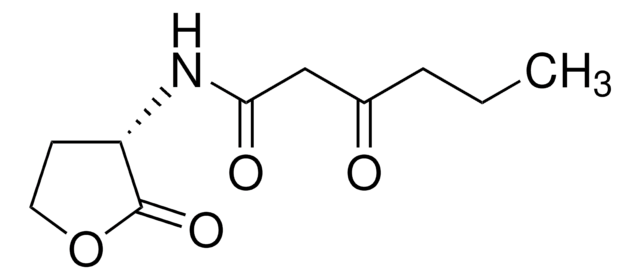Kluczowe dokumenty
92591
DL-2,6-Diaminopimelic acid
≥95% (TLC)
Synonim(y):
rac.-DAP, DL-α,ε-Diaminopimelic acid, DL-2,6-Diaminoheptanedioic acid
About This Item
Polecane produkty
product name
DL-2,6-Diaminopimelic acid, ≥95% (TLC)
Poziom jakości
Próba
≥95% (TLC)
Postać
powder
ciąg SMILES
OC([C@@H](N)CCC[C@H](N)C(O)=O)=O
InChI
1S/C7H14N2O4/c8-4(6(10)11)2-1-3-5(9)7(12)13/h4-5H,1-3,8-9H2,(H,10,11)(H,12,13)/t4-,5-/m0/s1
Klucz InChI
GMKMEZVLHJARHF-WHFBIAKZSA-N
Zastosowanie
Działania biochem./fizjol.
Opakowanie
Komentarz do analizy
Hasło ostrzegawcze
Warning
Zwroty wskazujące rodzaj zagrożenia
Zwroty wskazujące środki ostrożności
Klasyfikacja zagrożeń
Eye Irrit. 2 - Skin Irrit. 2 - STOT SE 3
Organy docelowe
Respiratory system
Kod klasy składowania
11 - Combustible Solids
Klasa zagrożenia wodnego (WGK)
WGK 3
Temperatura zapłonu (°F)
Not applicable
Temperatura zapłonu (°C)
Not applicable
Certyfikaty analizy (CoA)
Poszukaj Certyfikaty analizy (CoA), wpisując numer partii/serii produktów. Numery serii i partii można znaleźć na etykiecie produktu po słowach „seria” lub „partia”.
Masz już ten produkt?
Dokumenty związane z niedawno zakupionymi produktami zostały zamieszczone w Bibliotece dokumentów.
Nasz zespół naukowców ma doświadczenie we wszystkich obszarach badań, w tym w naukach przyrodniczych, materiałoznawstwie, syntezie chemicznej, chromatografii, analityce i wielu innych dziedzinach.
Skontaktuj się z zespołem ds. pomocy technicznej








